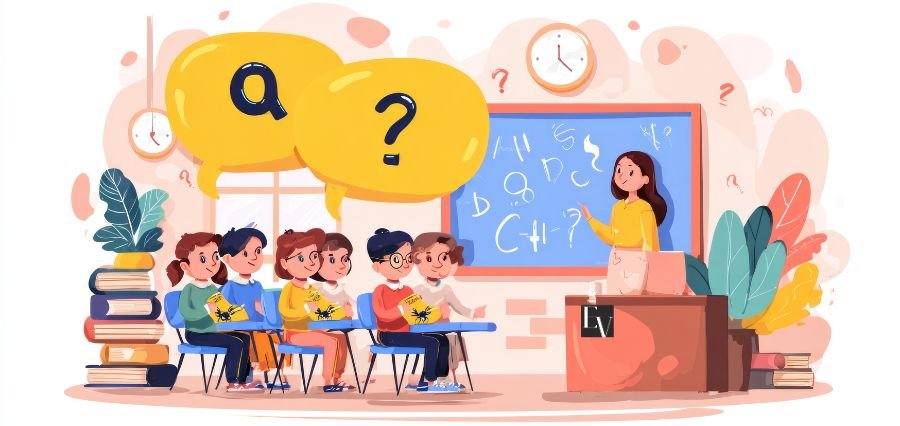Amid this ever-changing learning industry, great importance is attached to lesson planning with the aim of enhancing student learning. One teaching approach that’s gaining popularity these days among educationists is that of Depth of Knowledge (DOK).
Beyond the design and structure of the lesson, DOK significantly facilitates student engagement as well as conceptual understanding. More than anything, educators need to realize the true value of using the Depth of Knowledge in their teaching processes.
Understanding the Concept of Depth of Knowledge
Depth of Knowledge refers to the idea that all learning objectives are not of equal value. That is, some tasks merely require the recall of facts while others demand more complex thought. This model describes knowledge at four different levels.
- Recall and Reproduction: This level contains simple tasks that include recalling facts or performing simple procedures. Although basic knowledge is fundamental, it acts as a prerequisite for deeper comprehension.
- Skills and Concepts: Students use their acquired knowledge to solve problems at this level, which requires greater mental complexity. Teachers can inspire students to see the connections between things and what lies beneath.
- Strategic Thinking: At this point, students are expected to think strategically and creatively by coming up with solutions to complex problems. This stage encourages independence and understanding of the subject material.
- Extended Thinking: The most challenging level requires students to participate in extended activities. These activities often encompass long-term research studies or in-depth investigations. Students synthesize numerous sources of information and present unique viewpoints.
Including the above levels of learning in lessons can make education a more logical approach, helping not only with curriculum standards but also in making students think.
Benefits of Utilization of Depth of Knowledge in Lesson Planning
Inclusion of depth of knowledge into lesson planning avails many benefits to educators. Ultimately, all these benefits improve the learning process for students. For one, it fosters a deeper appreciation of the matter. When designed with different levels of knowledge, lessons expose learners to diverse levels of cognitive complexity that lead to better understanding.
Another reason this framework accommodates differentiation in instruction is because different students have different learning needs. Teachers can tailor their approach by varying the depth of knowledge in lessons, so that all students, regardless of their current skill level or background, can meaningfully engage with the material.
Furthermore, using Depth of Knowledge fosters an inquiry-based practice in the classroom. Students are no longer passive receivers of information but are instead active learners inquiring about questions with answers. This practice encourages curiosity and the development of a growth mindset, which is critical for lifelong learning.
Application of Depth of Knowledge Concept into Lesson Plans
It means that a set of strategies which can help implement the depth of knowledge will first need educators to recognize a few learning objectives clearly. Thereby, planning would depend upon knowing what needs to be done and known at a specific juncture for the students involved.
When specific objectives have been decided upon by educators, further steps will determine the types of activities for activities belonging to specific DOKs. By including an assortment of task types-from relatively simple recall of facts to more complex levels of problem solving-teachers keep students challenged while engaged.
This is what has happened in this lesson on ecosystems: it first started with simple recall of a fact about each habitat (Level 1); then grouping related organisms according to their roles within an ecosystem (Level 2), analyzing the influence of human action on those ecosystems (Level 3), and ultimately proposing solutions aimed at reducing their impacts (Level 4).
Furthermore, the assessment method should be commensurate with the depth of knowledge. Traditional tests are mostly aligned with lower-order thinking skills. By designing assessments that require critical thinking and application, educators can more accurately gauge student understanding and readiness.
Encourage Collaboration and Communication
An important component of using Depth of Knowledge is creating a collaborative atmosphere. Group activities allow the students to discuss their ideas and solutions. It not only develops understanding but also communication skills required in today’s world.
Teachers can create space for discussion using open-ended questions that stimulate deep thinking. In the process, it creates a vibrant learning environment because the classroom will allow students to explore various perspectives and engage in meaningful dialogue.
Conclusion
With education being shaped to meet the needs of today’s learners, embracing the Depth of Knowledge framework is a powerful way to plan a lesson. Understanding how knowledge varies and thoughtfully implementing these different levels allows educators to transform the way they teach and so forth. It can result in more engaged, inquisitive, and capable students.
The journey to acknowledging the concept of depth of knowledge may be intentional and reflective, but the payoffs are worth it. Students who are equipped with critical thinking skills and a deeper understanding of material are more likely to succeed in their academic pursuits and beyond. This approach will not only enrich lesson plans but also create lasting impacts on student learning.





